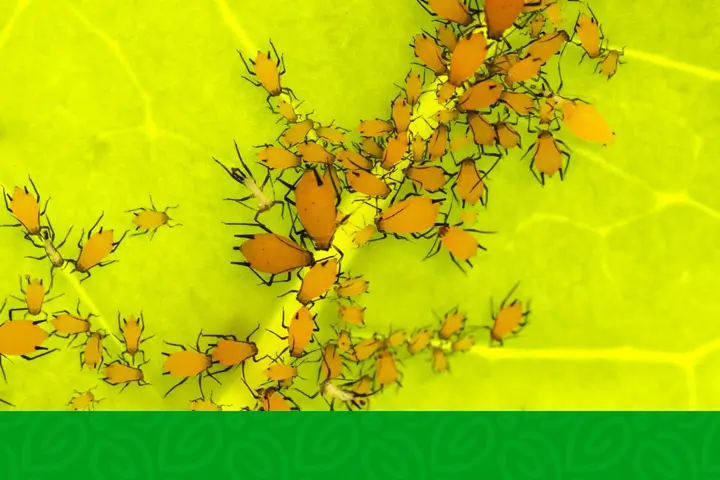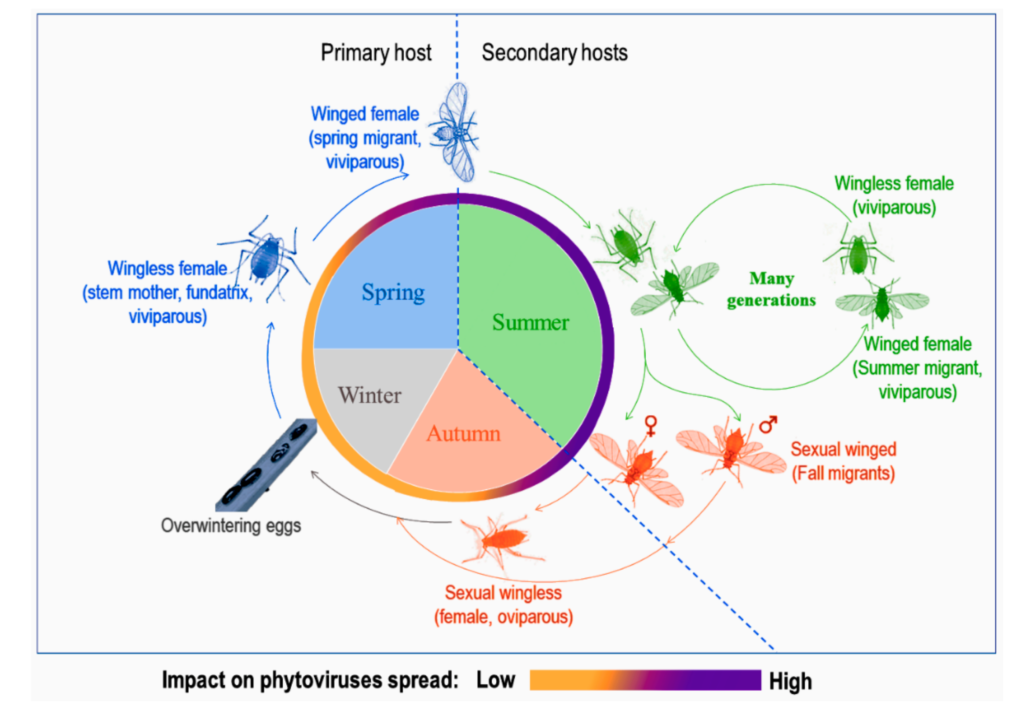
Aphids, often dismissed as inconspicuous garden pests, hold the potential to unleash devastation in the world of agriculture. These tiny sap-sucking insects, which can multiply at an alarming rate, have a secret weapon in their arsenal—a capability that makes them a formidable threat to farmers. Aphids, as unsuspecting as they seem, can transmit plant diseases as they feed, acting as vectors for pathogens. In this article, we embark on a journey to uncover the hidden risks associated with aphid-transmitted plant diseases and explore the most effective strategies for mitigation.
The Hidden Risks of Aphids:
Aphids have a dual role in their life cycle: they feed on plant sap and, unwittingly, become vectors for plant diseases. As they probe plant tissues with their needle-like mouthparts, they can acquire pathogens from infected plants and then transmit these diseases to healthy ones. It’s a silent threat that often goes unnoticed until the damage is done.
Common Aphid-Transmitted Plant Diseases:
The list of plant diseases transmitted by aphids is extensive, and each poses unique risks to crops. Let’s delve into some of the most notorious ones:

- Potato Virus Y (PVY): PVY is a nightmare for potato farmers. It causes symptoms such as mosaic patterns on leaves and leaf curling. Yield losses can be substantial when PVY strikes, making it a significant concern in potato-growing regions.
- Cucumber Mosaic Virus (CMV): CMV is a versatile troublemaker, affecting a wide range of crops, including cucumbers, tomatoes, and peppers. Infected plants exhibit mosaic-like discoloration and stunted growth.
- Barley Yellow Dwarf Virus (BYDV): Wheat and barley growers dread the impact of BYDV. This virus results in yellowing of leaves, stunted growth, and a decrease in grain quality.
- Bean Common Mosaic Virus (BCMV): Bean crops are not spared, as BCMV can lead to severe reductions in bean pod quality and yield, impacting farmers’ bottom lines.
Mitigation Strategies:
Understanding the risks is crucial, but what can farmers do to protect their crops from aphid-transmitted plant diseases? Here are comprehensive mitigation strategies:
- Early Detection and Monitoring: Vigilance is the first line of defense. Regularly inspect your crops for signs of aphid infestation, such as curled leaves or the presence of sticky honeydew. Early detection allows for swift intervention.
- Resistant Crop Varieties: Planting aphid-resistant crop varieties is a proactive step. These specially bred varieties possess natural defenses that deter aphids and reduce the risk of disease transmission. For instance, some wheat varieties have genes that discourage aphids from settling.
- Natural Predators: Nature has its own army against aphids. Encourage the presence of natural aphid predators like ladybugs, lacewings, and parasitic wasps in your fields. These beneficial insects help keep aphid populations in check.
- Insecticidal Soaps and Oils: When aphid populations become problematic, consider using insecticidal soaps and oils. These are less harmful to beneficial insects and the environment than chemical pesticides and can effectively control aphid numbers.
- Crop Rotation: Aphids often overwinter in crop residues. Rotate your crops to disrupt the life cycle of aphids and reduce the buildup of disease reservoirs in the soil.
- Companion Planting: Certain companion plants act as natural aphid repellents when interplanted with susceptible crops. Marigolds, chives, and nasturtiums are just a few examples.
- Timely Planting and Harvesting: Align your planting and harvesting schedules to minimize overlap with peak aphid activity periods. This reduces the window of opportunity for aphids to transmit diseases.
- Strengthen Crop Nutrition: Well-nourished crops are better equipped to resist disease. Ensure your plants receive balanced nutrition to boost their natural defenses.
A Shield Against the Silent Threat:

* and Frédéric Francis
Aphids, though small and seemingly inconspicuous, wield the potential to wreak havoc on crops by transmitting plant diseases. But farmers armed with knowledge and strategic mitigation efforts can build an impervious shield against this silent threat. By understanding the risks, embracing resistant crop varieties, fostering natural predator populations, and implementing sustainable pest management practices, farmers safeguard their crops, protect their livelihoods, and contribute to a resilient and productive agricultural future. In the battle against aphids and their plant diseases, wisdom and preparedness prevail, ensuring a prosperous harvest and a brighter future for agriculture.
Stay updated with the latest farming tips and agriculture industry news from Africa by subscribing to our newsletter. Don’t miss out on valuable insights and updates. Follow us on Twitter, LinkedIn, and Facebook to join our farming community and stay connected with us.



















